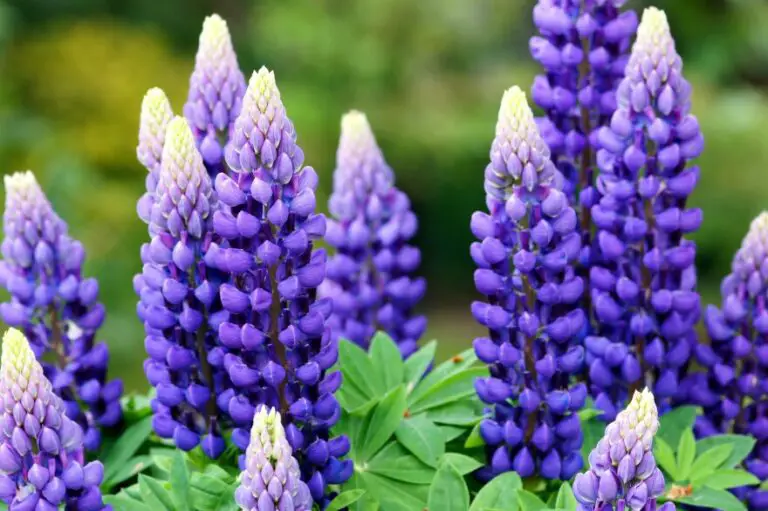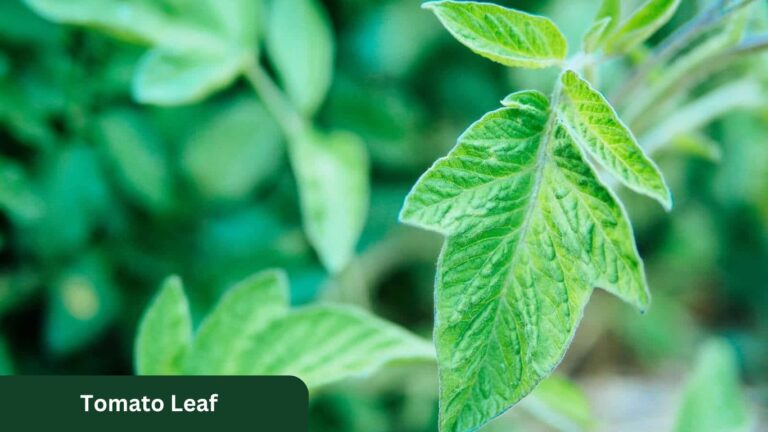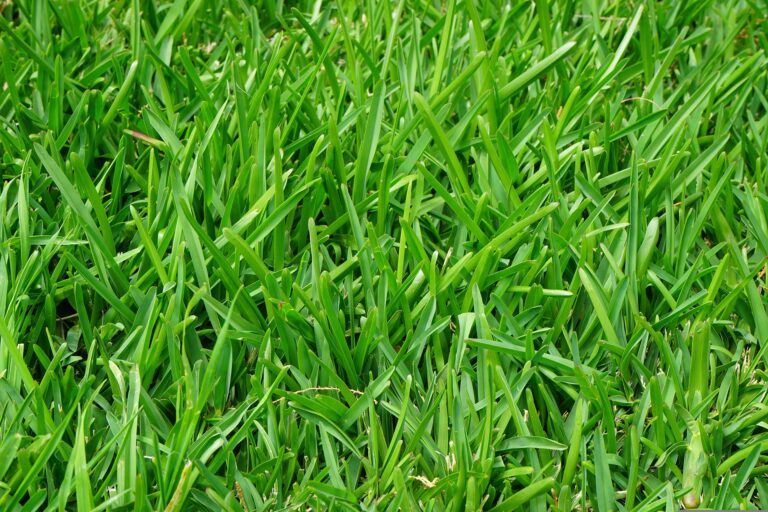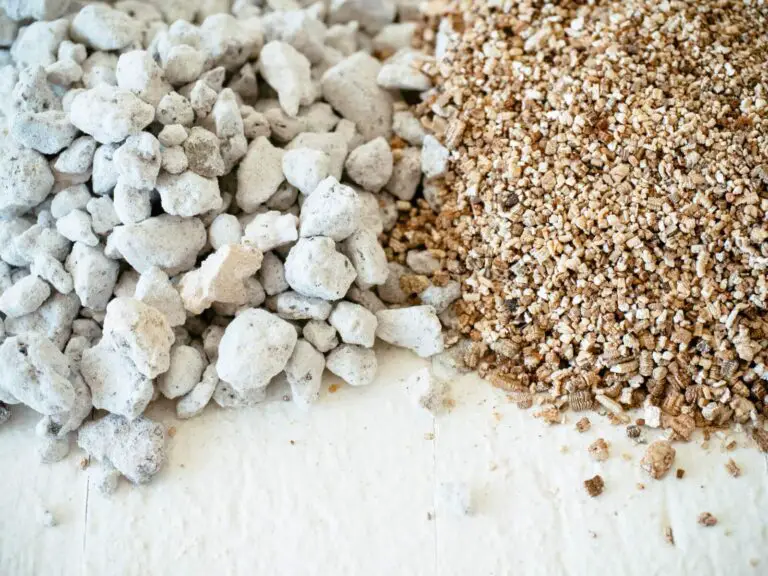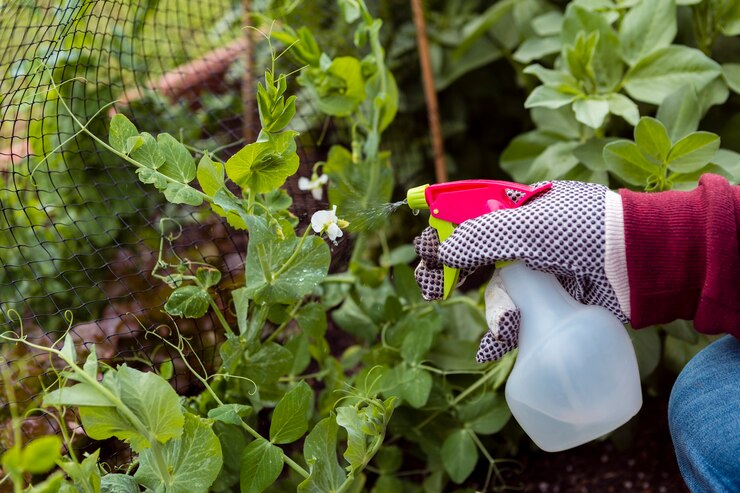Kalanchoe Blossfeldiana: A Guide to Vibrant Succulents
Table of Contents
Growing Conditions for Kalanchoe Blossfeldiana
Kalanchoe blossfeldiana is a popular succulent plant known for its vibrant and long-lasting flowers. To thrive, this plant requires specific growing conditions that mimic its natural habitat. Providing well-draining soil is crucial for preventing root rot, as Kalanchoe Blossfeldiana is sensitive to overwatering. Additionally, ensuring adequate sunlight exposure is essential for promoting healthy growth and blooming.
In terms of temperature, Kalanchoe Blossfeldiana prefers moderate to warm conditions, ideally between 60-85°F (15-29°C). While this plant can tolerate some variations in temperature, it is important to avoid exposing it to extreme cold or heat, as this can negatively impact its overall health and flowering capability. By creating a suitable environment with the right balance of light, water, and temperature, gardeners can cultivate thriving Kalanchoe Blossfeldiana plants that will brighten up any indoor or outdoor space.

Light Requirements for Kalanchoe Blossfeldiana
Kalanchoe blossfeldiana is a popular and vibrant succulent plant known for its stunning clusters of colorful flowers. When it comes to providing the ideal growing conditions for this plant, understanding its light requirements is crucial. Kalanchoe blossfeldiana thrives in bright, indirect sunlight. Placing the plant near a sunny window or providing it with artificial grow lights can help ensure it receives the necessary light levels for healthy growth and vibrant blooms. However, it is important to avoid exposing the plant to direct sunlight for extended periods, as this can lead to sunburn and damage the delicate foliage.
In addition to considering the intensity of light, the duration of light exposure is also important for Kalanchoe blossfeldiana. On average, this plant requires around 12-14 hours of light per day to flourish. Providing a consistent light schedule can help regulate the plant’s growth patterns and encourage robust flowering. For those growing Kalanchoe blossfeldiana indoors, rotating the plant periodically can ensure all sides receive adequate light exposure, leading to a more balanced and symmetrical growth habit. By following these light requirements, gardeners can help their Kalanchoe blossfeldiana thrive and produce an abundance of vibrant blooms.

Watering Tips for Kalanchoe Blossfeldiana
When it comes to watering your Kalanchoe Blossfeldiana, it’s essential to strike the right balance. Overwatering can lead to root rot, while underwatering can result in wilting and stunted growth. The key is to allow the soil to dry out slightly between waterings to prevent waterlogged conditions. Aim to water your Kalanchoe when the top inch of soil feels dry to the touch.
One helpful tip is to water your Kalanchoe Blossfeldiana from the bottom up. This method allows the plant to absorb water through the roots without risking excessive moisture on the leaves, which can invite disease. Simply place your pot in a tray of water and allow the soil to soak up the water from the bottom for about 30 minutes, then remove the pot from the tray and let any excess water drain out. This technique promotes healthy root development and efficient water uptake for your Kalanchoe.
Soil Needs for Kalanchoe Blossfeldiana
When it comes to growing Kalanchoe blossfeldiana successfully, providing the right soil conditions is crucial for the plant’s health and blooming. This succulent species thrives in well-draining soil that mimics its natural habitat, ensuring that excess water does not pool around the roots and cause rot. A combination of cactus or succulent potting mix with perlite or sand can create the perfect medium for Kalanchoe blossfeldiana, allowing for proper aeration and preventing waterlogged conditions.
The soil pH for Kalanchoe blossfeldiana should ideally be slightly acidic to neutral, ranging between 6.0 to 7.0. This pH range provides the plant with access to essential nutrients, promoting healthy growth and vibrant flowering. Monitoring the soil pH periodically and adjusting it as needed can help maintain optimal conditions for Kalanchoe blossfeldiana to thrive and bloom abundantly.
Table summarizing the soil needs for Kalanchoe Blossfeldiana:
| Aspect | Requirement |
| Plant Type | Succulent |
| Soil Type | Well-draining, sandy soil |
| Container and Potting Soil | Use a container with well-draining soil mix (e.g., perlite or sand) |
| Soil pH | Aim for pH 6.0 to 6.5 |
| Maintenance Level | Low |
| Watering Needs | Low |
| Exposure | Bright indirect light |
| Hardiness Zone | Kalanchoe |
Remember to provide your Kalanchoe Blossfeldiana with the right soil conditions to ensure its health and growth!
Temperature Preferences for Kalanchoe Blossfeldiana
Kalanchoe blossfeldiana, also known as flaming Katy, is a popular flowering succulent that requires specific temperature conditions to thrive. This plant prefers temperatures between 60-85°F (15-29°C) during the day and slightly cooler temperatures around 45-60°F (7-15°C) at night. Consistent temperature fluctuations outside these ranges may hinder the plant’s growth and flowering capabilities.
Extreme temperatures, either hot or cold, can be detrimental to Kalanchoe blossfeldiana. Prolonged exposure to temperatures below 40°F (4°C) can cause damage to the plant’s sensitive foliage, leading to wilting and rotting. Similarly, excessively high temperatures above 90°F (32°C) can stress the plant, resulting in leaf scorch and decreased blooming. It is essential to provide a stable and moderate temperature environment for Kalanchoe blossfeldiana to ensure its health and vitality.
Propagation Methods for Kalanchoe Blossfeldiana
Propagation of Kalanchoe Blossfeldiana can be easily achieved through stem cuttings. To propagate using this method, simply cut a healthy stem from the plant, making sure it is at least a few inches long. Remove any leaves from the lower portion of the stem and allow the cutting to dry for a day or two. Plant the cutting in a well-draining soil mix and keep it slightly moist until roots develop.
Another effective propagation method for Kalanchoe Blossfeldiana is through leaf cuttings. Select a healthy leaf from the plant and gently twist it off, ensuring that a small portion of the leaf’s stem is intact. Allow the leaf cutting to dry for a couple of days before placing it on top of a moist soil mix. Keep the soil slightly damp and wait for new plantlets to form at the base of the leaf.

Common Pests and Diseases of Kalanchoe Blossfeldiana
Kalanchoe blossfeldiana is usually resilient to pests and diseases, but like any plant, it can still fall victim to common issues. Some of the pests that may target this plant include aphids, mealybugs, and spider mites. These pests can cause damage by sucking the sap from the plant, leading to wilted leaves, stunted growth, and yellowing. It’s important to regularly inspect your Kalanchoe blossfeldiana for any signs of infestation and take prompt action if pests are detected.
In terms of diseases, Kalanchoe blossfeldiana may be susceptible to fungal infections such as powdery mildew and root rot. Powdery mildew can present as white, powdery spots on the leaves, while root rot is often indicated by wilting, yellowing leaves, and a rotting smell from the roots. Proper watering practices, good air circulation, and maintaining well-draining soil can help prevent these diseases. If you notice any signs of fungal infections, it’s crucial to address them promptly to prevent further spread and potential damage to your plant.
Here are some common pests and diseases that can affect Kalanchoe Blossfeldiana:
| Aspect | Common Pests and Diseases |
| Pests | |
| Mealy bugs | Small, pale pink to white insects with a fuzzy appearance. They thrive in humid, warm climates and feed on a sweet sap of plants, targeting tender plants. |
| Diseases | |
| Fungal Rot | A disease caused by fungi that can lead to rotting of plant tissues. |
| Powdery Mildew | A fungal disease characterized by a powdery white coating on leaves |
| Sun Scald | Damage caused by excessive exposure to intense sunlight. |
Remember to keep an eye out for these issues, and early treatment is essential for maintaining the health of your Kalanchoe Blossfeldiana
Pruning and Maintenance of Kalanchoe Blossfeldiana
Regular pruning and maintenance are essential tasks to keep your Kalanchoe blossfeldiana plant healthy and thriving. Remove any dead or yellowing leaves to promote new growth and prevent the spread of disease. Use clean, sharp scissors to make clean cuts without damaging the plant. Inspect the plant regularly for any signs of pests or diseases, and take prompt action to address any issues that may arise.
In addition to pruning, regular maintenance of your Kalanchoe blossfeldiana plant includes monitoring its growth and overall health. Ensure that the plant is receiving adequate sunlight, water, and nutrients for optimal growth. Rotate the plant occasionally to ensure even growth on all sides. Consider repotting the plant if it becomes root-bound or outgrows its current container. By staying proactive with pruning and maintenance, you can enjoy a beautiful and healthy Kalanchoe blossfeldiana plant in your home or garden.
Choosing the Right Pot for Kalanchoe Blossfeldiana
When selecting a pot for your Kalanchoe blossfeldiana, it’s crucial to consider the plant’s growth habits and requirements. Opt for a well-draining pot that allows excess water to escape easily, as Kalanchoe plants are susceptible to root rot if left in standing water. Choose a pot with adequate drainage holes at the bottom to ensure proper moisture regulation and prevent waterlogged soil, promoting healthy root development and overall plant vigor.
Additionally, the size of the pot plays a significant role in the well-being of your Kalanchoe blossfeldiana. Select a container that is slightly larger than the plant’s current root system to accommodate growth but avoid excessively large pots, as they can retain too much moisture and lead to root issues. Aim for a pot that provides ample room for the plant’s roots to spread out comfortably while still maintaining a snug fit to support stability. By choosing the right pot size and type, you can create an ideal environment for your Kalanchoe blossfeldiana to thrive and flourish.

Fertilizing Guidelines for Kalanchoe Blossfeldiana
Kalanchoe Blossfeldiana, also known as Flaming Katy, requires regular fertilization to support its growth and bloom cycles. During the active growing season in spring and summer, it is recommended to fertilize this succulent plant every two to four weeks using a balanced liquid fertilizer diluted to half strength. This will provide the necessary nutrients, such as nitrogen, phosphorus, and potassium, for healthy foliage and vibrant flowers.
However, during the fall and winter months when Kalanchoe Blossfeldiana is in a period of dormancy, it is advised to reduce the frequency of fertilization to once a month or even suspend it altogether. Over-fertilizing during the plant’s rest phase can lead to nutrient imbalances and potential issues with growth. Always ensure that the fertilizer is applied to damp soil to prevent root burn and follow the manufacturer’s instructions for proper dilution and application methods. By following these fertilizing guidelines, you can help your Kalanchoe Blossfeldiana thrive and display its stunning blooms throughout the year.
Blooming Seasons of Kalanchoe Blossfeldiana
Kalanchoe Blossfeldiana, also known as flaming katy or Christmas kalanchoe, is a popular houseplant cherished for its vibrant blooms. This succulent perennial typically produces its colorful flowers during the winter and early spring months, adding a welcome burst of color to indoor spaces when many other plants are dormant. The blooming seasons of Kalanchoe Blossfeldiana can vary slightly depending on growing conditions, but in general, you can expect to see its dazzling display of flowers for several weeks to a couple of months.
The blooms of Kalanchoe Blossfeldiana come in a range of hues, including shades of red, orange, yellow, pink, and white, making it a versatile choice for brightening up any room. With proper care and attention to its growing needs, this charming plant can reward you with multiple blooming cycles throughout the year, providing continuous beauty and joy in your home. Whether you choose a single plant or create a stunning display with a variety of colors, Kalanchoe Blossfeldiana is sure to delight with its stunning flowers and easy-going nature.
Companion Plants for Kalanchoe Blossfeldiana
Kalanchoe Blossfeldiana, with its vibrant blooms and attractive foliage, can be beautifully complemented by certain companion plants that enhance its visual appeal and overall growth. When selecting companion plants for Kalanchoe Blossfeldiana, it is essential to consider factors such as light requirements, moisture levels, and growth habits to ensure a harmonious coexistence in a shared planting space. Plants that thrive in similar lighting conditions, such as succulents like Echeveria or Haworthia, can make excellent companions for Kalanchoe Blossfeldiana in a sunny spot, creating a visually stunning display of contrasting textures and colors.
In addition to succulents, other suitable companion plants for Kalanchoe Blossfeldiana include air-purifying varieties like Spider Plants (Chlorophytum comosum) or Peace Lilies (Spathiphyllum spp.), which not only lend a touch of greenery but also help maintain a healthy indoor environment. The key is to select plants that have similar care requirements and growth patterns to ensure that all species involved can thrive in harmony. By combining Kalanchoe Blossfeldiana with compatible companions, gardeners can create visually appealing arrangements that showcase the unique beauty of each plant while promoting optimal growth and well-being for all species involved.

Indoor vs. Outdoor Growing for Kalanchoe Blossfeldiana
When deciding whether to grow Kalanchoe blossfeldiana indoors or outdoors, several factors should be considered. Indoor growing provides more control over the plant’s environment, making it easier to maintain consistent conditions such as light, temperature, and humidity. This can be particularly beneficial in regions with extreme weather conditions or limited sunlight. Additionally, indoor cultivation can protect the plant from pests and diseases that may be present in outdoor environments.
On the other hand, growing Kalanchoe blossfeldiana outdoors can be advantageous for those seeking to harness natural sunlight and airflow for optimal plant growth. Outdoor cultivation allows the plant to receive direct sunlight, which is crucial for its blooming cycle. The plant can also benefit from being exposed to natural elements, which can contribute to its overall health and resilience. However, when growing outdoors, it is important to consider factors such as temperature fluctuations, pests, and proper drainage to ensure the plant’s well-being.
Unique Varieties of Kalanchoe Blossfeldiana
Kalanchoe Blossfeldiana is a diverse species that offers a wide range of unique varieties, each with its own distinctive characteristics and beauty. One such variety is the ‘Calandiva,’ known for its abundant double flowers that create a lush and full appearance. With its vibrant colors and compact growth habit, the ‘Calandiva’ is a popular choice for adding a splash of color to indoor or outdoor spaces.
Another striking variety of Kalanchoe Blossfeldiana is the ‘Mirabella,’ which boasts large clusters of small, star-shaped flowers in shades of pink, white, or red. The ‘Mirabella’ is prized for its long-lasting blooms and ability to thrive in various growing conditions. Whether used as a standalone focal point or mixed with other plants in a decorative arrangement, the ‘Mirabella’ adds a touch of elegance and charm to any setting.
Creative Uses for Kalanchoe Blossfeldiana in Home Decor
Kalanchoe Blossfeldiana is not only a stunning plant to add to your indoor decor but also a versatile one that can be creatively incorporated into various home design elements. One creative use of this plant is to showcase its vibrant blooms in a simple yet elegant vase or pot on a mantle or shelf. The colorful flowers of the Kalanchoe Blossfeldiana can instantly brighten up any room and add a touch of natural beauty to your living space.
Another creative way to integrate Kalanchoe Blossfeldiana into your home decor is by using them as part of a centerpiece arrangement for your dining table or coffee table. Pairing these plants with other decorative elements like candles, stones, or succulents can create a visually appealing and harmonious display that brings a touch of nature indoors. Additionally, you can consider placing the Kalanchoe Blossfeldiana in a hanging planter to add a unique and eye-catching element to your room, especially in spaces with limited surface area for traditional pots.
To Know More About Growing Kalanchoe Blossfeldiana Plant, Watch This Viideo!
Can Kalanchoe Blossfeldiana be used in terrariums or dish gardens?
Yes, Kalanchoe Blossfeldiana can be a great addition to terrariums or dish gardens, adding a pop of color and texture to the arrangement.
Is it possible to use Kalanchoe Blossfeldiana in hanging planters?
Absolutely! Kalanchoe Blossfeldiana’s trailing growth habit makes it a perfect choice for hanging planters, adding a unique touch to your indoor or outdoor space.
Can Kalanchoe Blossfeldiana be incorporated into floral arrangements?
Yes, Kalanchoe Blossfeldiana’s vibrant blooms can be cut and used in floral arrangements, adding a touch of freshness and color to any bouquet.
Are there any creative ways to display Kalanchoe Blossfeldiana in the home?
Yes, you can get creative by planting Kalanchoe Blossfeldiana in a unique container, such as a vintage teacup or a decorative pot, to add a touch of personality to your home decor.
Can Kalanchoe Blossfeldiana be used as a centerpiece for special occasions?
Absolutely! The colorful blooms of Kalanchoe Blossfeldiana make it a perfect choice for a centerpiece at weddings, parties, or any special occasion, adding a vibrant and cheerful touch to the decor.


